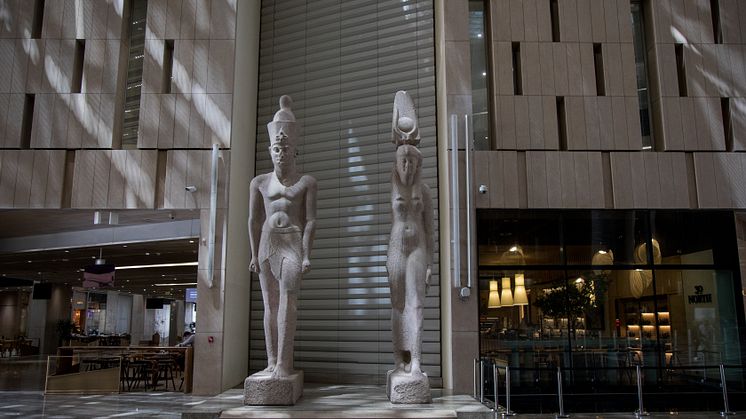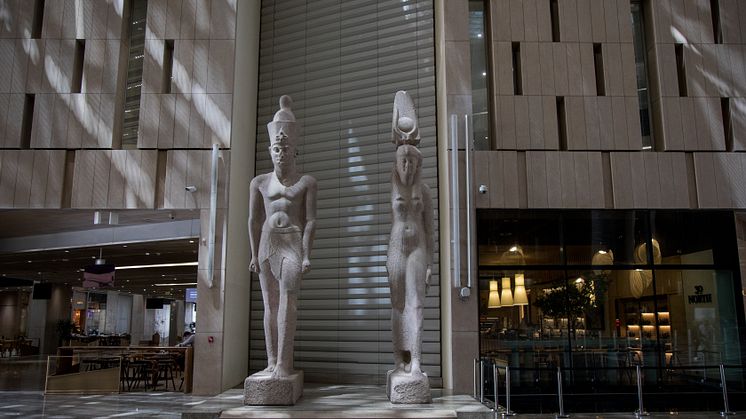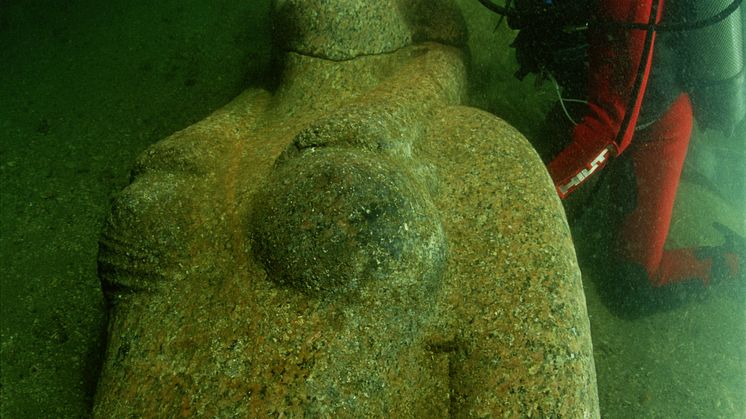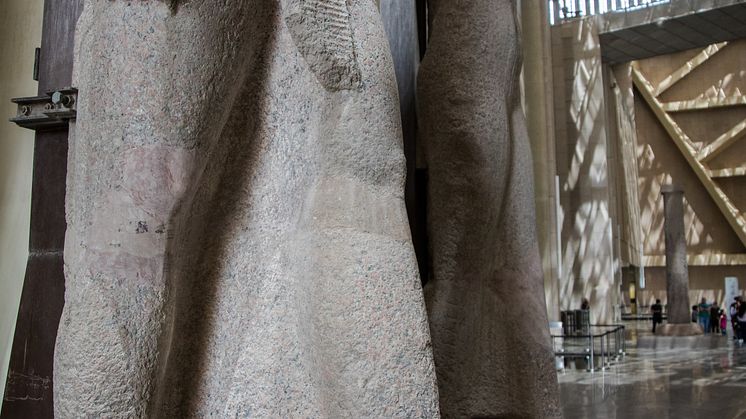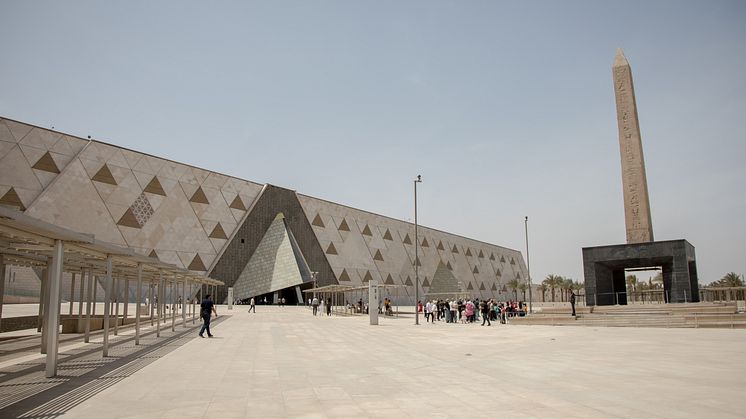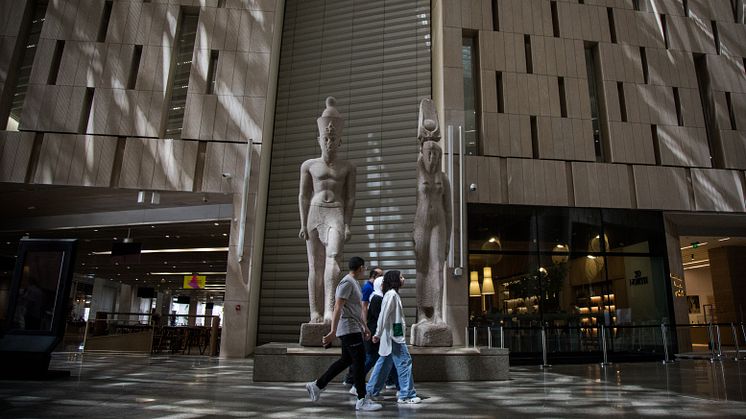
Press release -
Goddio's find on display: Colossal statues from the sunken city of Thonis-Heracleion now in the Grand Egyptian Museum
Two colossal statues retrieved by Franck Goddio and his team from the ancient sunken city of Thonis-Heracleion (Aboukir Bay), are now on display at the Grand Egyptian Museum (GEM) in Giza near Cairo. The museum, which houses the largest collection of Egyptian antiquities, is scheduled to officially open at the end of the year. However, small, guided groups are already allowed to visit the Great Hall of the future museum and the colossal statues.
The two approximately five-meter-high statues of a Ptolemaic king and queen made of pink granite were recovered from the sea off the Egyptian coast by the European Institute for Underwater Archaeology (IEASM) under the direction of Franck Goddio and with the support of the Hilti Foundation. They are part of one of the largest underwater archaeological research projects worldwide, which began more than 25 years ago and continues to this day. For the Hilti Foundation, it was the starting signal in 1996 for its commitment to a still relatively young science and to Franck Goddio's pioneering work, which promised to uncover evidence of ancient civilizations that had lain hidden for millennia under metre-high layers of sand and sediment in the sea.
"The support of the Hilti Foundation is essential to the success of our work in Egypt," says Franck Goddio, "Without it, we would not be able to explore this huge marine zone of about 110 square kilometers and make all the discoveries."
And the commitment has paid off! The finds that Franck Goddio and his team have been bringing to light for years with meticulous work and the use of the latest technologies exceed all expectations. Oxford University has also been a partner for 20 years and collaborates on the studies and publications on the finds. However, these are not only captivating the scientific world, but also a broad public. Several exhibition tours of the "Sunken Treasures of Egypt" have already thrilled an audience of millions around the globe.
Michael Hilti, board member of the Hilti Foundation, is delighted about the new exhibition of the colossal statues at the GEM: "It makes us very happy that the Queen and King from Thonis-Heracleion are now part of one of the largest archaeological museums in the world. It is exactly what we want to achieve with our commitment: To break new, successful ground in the study of past civilizations and to make the discoveries, knowledge and lessons learned accessible to all."
Thonis-Heracleion was Egypt's largest port for centuries before the founding of Alexandria in 331 B.C. In addition, the city was of great religious and political importance. The Osiris procession was held annually in its temple of Amun, ensuring the continuity of the pharaoh's rule. Several earthquakes followed by tidal waves, which in turn triggered ground liquefaction, caused large areas of the Nile Delta to sink into the sea and with them the city of Thonis-Heracleion. All knowledge about it was buried for millennia and only rediscovered by IEASM since 2000.
"I am also pleased to be able to show the results of our commitment to underwater archaeology to all employees of the Hilti Group with the exhibition of the statues in the GEM," emphasises Michael Hilti, "because they contribute greatly to our ability to support such projects."
Information on viewing opportunities can be found on the GEM's visitor website:
Further information on the Hilti Foundation's commitment to underwater archaeological research in Egypt can be found here:
Topics
Categories
The Hilti Foundation is a non-profit organisation that aims to contribute to a better future. With its clearly focused priorities of "Music for Social Change", "Affordable Housing & Technology", "Economic Empowerment" and "Emergency Relief", it is committed to areas that are among the great global challenges of our time. By supporting the work of Franck Goddio and the IEASM, the Hilti Foundation has been making a lasting contribution to innovation in underwater archaeological research since 1996, combined with the aim of making the results accessible to both experts and the wider public. The Hilti Foundation is jointly funded by the Hilti Family Foundation and the Hilti Group.
European Institute for Underwater Archaeology (IEASM)
The IEASM was founded in 1987 as a French non-profit organisation by its president Franck Goddio. The aim of the institute is to locate, research, excavate and restore submerged sites. IEASM collaborates with scientists and experts from different scientific disciplines in its research missions and in the study and publication of the results. In addition, IEASM organises exhibitions to give the general public access to the discoveries.


